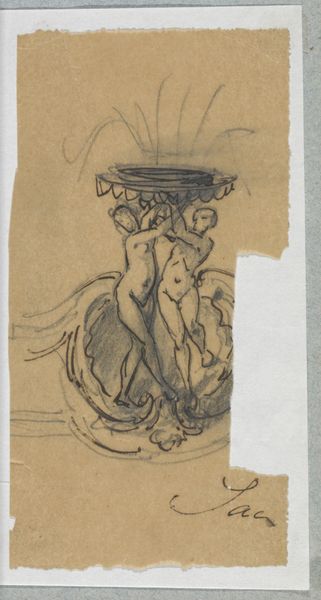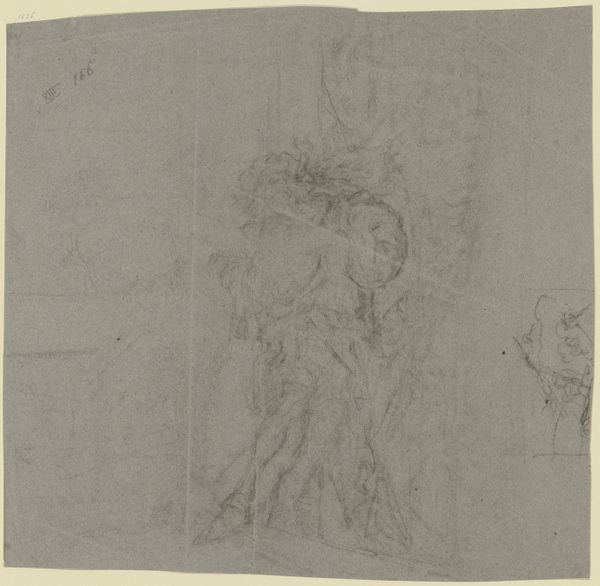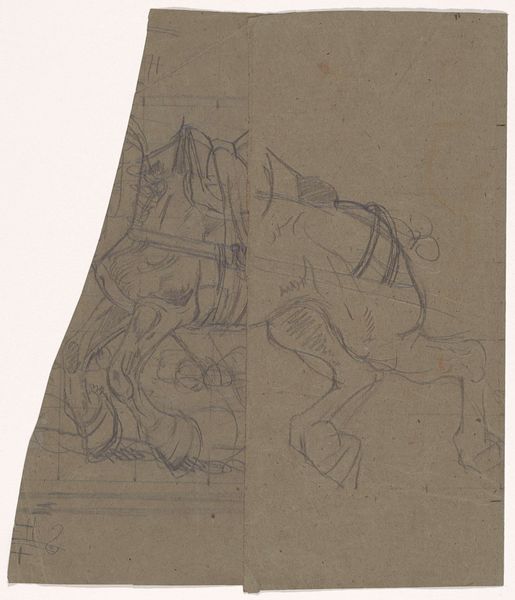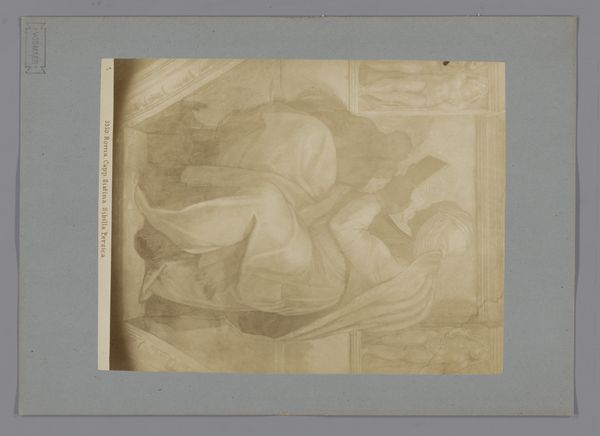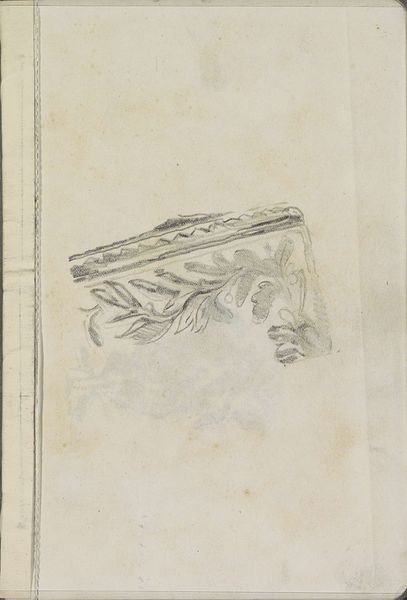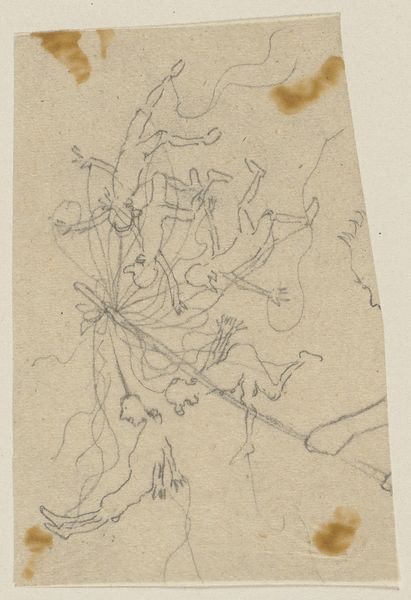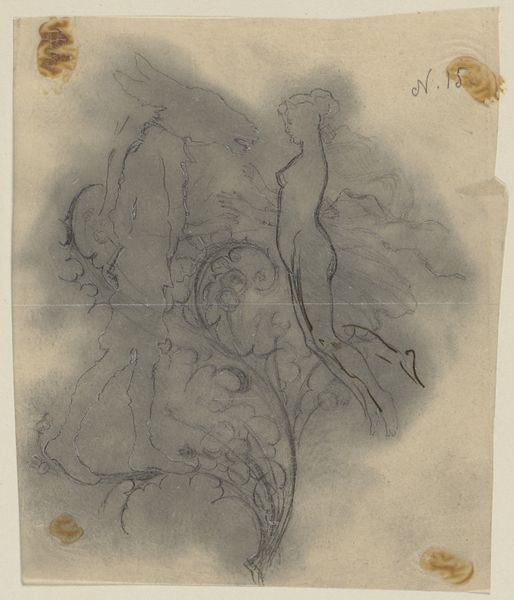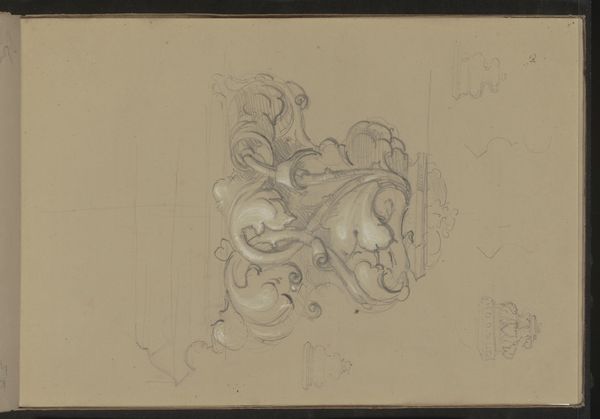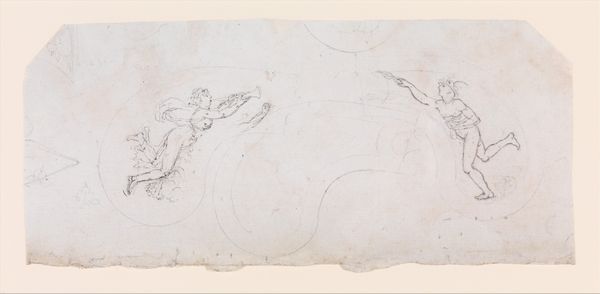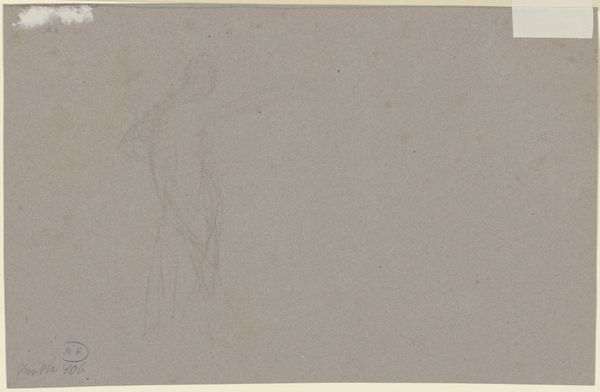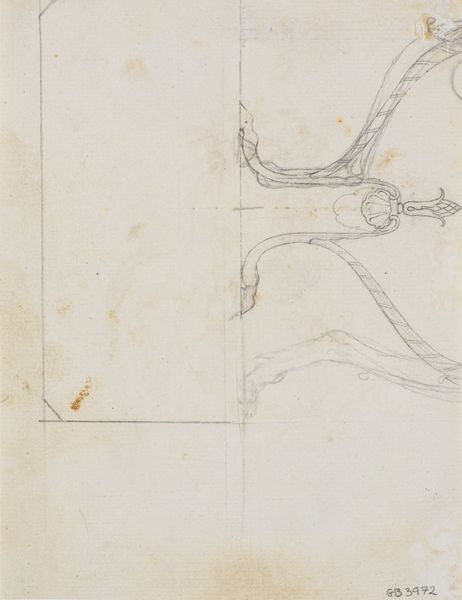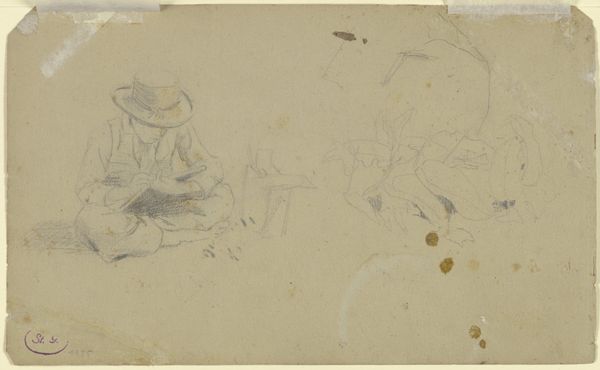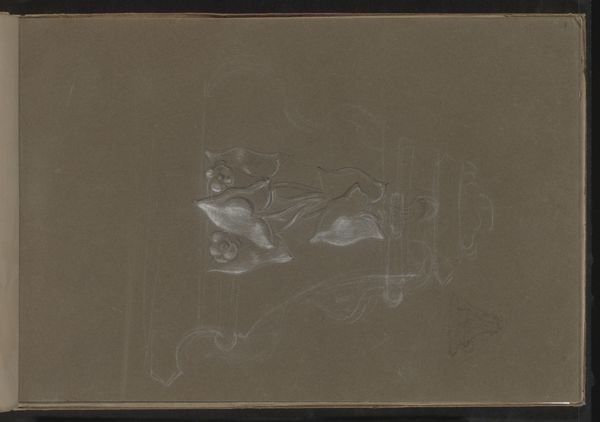
drawing, paper, pencil
#
portrait
#
drawing
#
toned paper
#
sketch book
#
incomplete sketchy
#
figuration
#
paper
#
11_renaissance
#
personal sketchbook
#
sketchwork
#
ink drawing experimentation
#
detailed observational sketch
#
pencil
#
sketchbook drawing
#
storyboard and sketchbook work
#
academic-art
#
sketchbook art
Dimensions: height 122 mm, width 117 mm
Copyright: Rijks Museum: Open Domain
Editor: This is "Ontwerp voor de linkerhelft van een tafelstuk met figuren," a drawing by Henri Cameré, made sometime between 1864 and 1894. The media are listed as pencil, ink, and paper. It looks like a quick study for a sculpture perhaps? There's such a dynamic interplay between the figures and the swirling ornamentation. How do you interpret this work formally? Curator: Indeed. Notice how Cameré uses line to delineate form, especially in the figures supporting the table piece. Consider the function of line as both descriptive and expressive here; the hatching creates depth, but also conveys a certain energy, a tentative quality perhaps related to its function as a preparatory sketch. Note, too, the overall composition, divided between the more structured base and the fluid grouping of figures above. Do you observe how the tonal variations play out in relation to the figures versus the ornament? Editor: Yes, the figures have lighter tones, which makes them pop. But overall, it’s all fairly monochromatic. Do you think that limitation enhances our ability to examine its composition? Curator: Precisely. Without a wide spectrum of color, we're compelled to analyze the relationships between the figures, the decorative base, and how they interact within the defined space of the drawing. It's an exercise in pure form and structure. Note, further, the subtle shifts in weight and balance implied by the asymmetry. Editor: So, the lack of color encourages this more structural analysis of the figures. The composition’s asymmetry then creates a certain dynamic tension that makes me focus on the individual elements. Curator: A perceptive observation! One appreciates that we’re encouraged to explore these underlying components, which offers a solid framework for grasping the artwork's formal architecture. Thank you. Editor: Absolutely. The structural analysis allows a deeper connection.
Comments
No comments
Be the first to comment and join the conversation on the ultimate creative platform.
